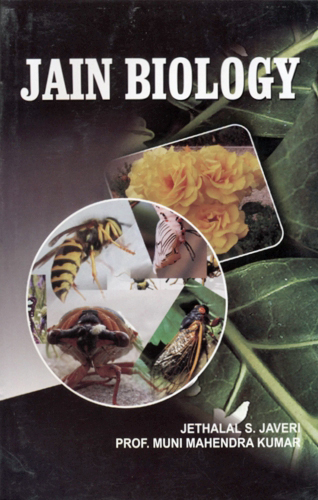A living organism is qualitatively distinct from the non-living matter, i.e., the differences between them are of kind rather than of degree. Functioning of the former is governed by some unique biological laws. The essence of a living organism is the set of principles determining the transmission of genetic information from one generation to the next.
The living organisms are composed of the same constituents as the rest of the Earth, but they possess, besides free will, which is the characteristic of life, all the following attributes:
Organisation, excitability, conductivity, contractility, metabolism, growth and reproduction. One or more of these, but not all may be possessed also by non-living matter.
In its composition, a living organism contains no special element but is mainly made up of 16 of the 92 elements that occur naturally on the Earth. Not only are these elements a very special set but they are combined together to make molecules more complicated than any other known in the universe.
A biogenesis or a spontaneous generation—theory that life, particularly micro-organisms, can originate from non-living matter—was not accepted by many scientists and was largely disproved by microbiological studies of Louis Pasteur. Chemical evolution, i.e., creation of chemicals of life such as nucleic acids before the appearance of life upon Earth is generally accepted.
The question as to whether the intricate phenomena of life could be explained in scientific terms, has produced two schools of thought - Vitalism and Mechanism. Vitalists (Biologists) do not accept that living depends upon a non-material soul but they accept the presence of a vital essence, or force which is peculiar to living organisms and which is different from all other forces found outside of living things. This vital force is not explainable in terms of physico-chemical phenomena and cannot be studied, because it resembles no other force in existence and is beyond man's analysis and understanding. This vital force is produced by the unique and large molecules, which are organized into living organisms.
The Biologists believe that:
- Living organisms contain a selected set of all the chemical elements present in other material systems.
- These elements are organized in a way that is not only unusual but unique, the class 'living organisms' is a set of one.
- They are not closed systems in equilibrium, but in a steady state of interchange with the external environment maintained by continual intake of fuel and expenditure of energy. Thus, carbon which is the most common constituent of foodstuffs, goes through the stomach and intestines into the blood and from there to a muscle where it is burnt to give energy when the muscle contracts. In a couple of hours after eating it will be breathed out as carbon dioxide. This process of self-maintenance is called homeostasis. They thus act with an aim, they show homeostasis (teleology or teleonomy).
There is much evidence that bodies of all living organisms on Earth from plants, jellyfish (the simplest of animals that has a nervous system) to apes and humans, all use the same DNA code and similar amino acids. And although they know in some details what the vartious substances involved in the composition of a living cell are, NO ONE HAS YET SYNTHESIZED A LIVING CELL IN THE LABORATORY It is admitted by them that the true living cells are much more complicated and they doubt whether they would be ever made artificially.
We can emphatically say that they would never be made artificially because life is not merely a composition of MATERIAL SUBSTANCES. Anon-material SOUL-SUBSTANCE is also essential to create a live cell. The soul is a substance but not a material one and this non-material/non-physical substance is eternal; it can neither be created nor destroyed. A soul animates a particular organism and manifests itself in various vital functions of life. They can be classified into ten groups called PRANA (vital force).
- Āyuṣya prāṇa - ability to keep alive for a predetermined lifespan which maintains the unity of the body and soul; when it terminates, death occurs.
- Śvāsocchvāsa prāṇa - ability to breathe is an essential (vital) function for survival.
- Śarīra balaprāṇa - vigor of the physical body, as a whole.
- Vacana bala or bhāṣā balaprāṇa - ability of vocal expression, both articulate and inarticulate.
- Manaḥ balaprāṇa - ability to think, remember and imagine.
- to 10. Indriya prāṇa - ability of utilising the perspective power of each of the five sense-organs.
Now it is not difficult to see that any of these psychic faculties is of no empirical utility without its physical counterpart called bio-potential (paryāpti). This means that only an organism possessing five sense organs and the brain (samjñi pañcendriya) would be possessed of all the ten pranas, while the lower ones will be possessed of less. For instance, in a one-sensed organism, such as a plant, only four prāṇas, (which is the bare minimum), could be active, viz., āyuṣya prāṇa, śvāsocchvāsa prāṇa, śarīra balaprāṇa and only one indriya prāṇa, that of touch. All the rest would be dormant. It should be noted that ability for communication (bhāṣā balaprāṇa) is possessed by two-sensed and higher organs.
 Jethalal S. Zaveri
Jethalal S. Zaveri
 Prof. Muni Mahendra Kumar
Prof. Muni Mahendra Kumar

